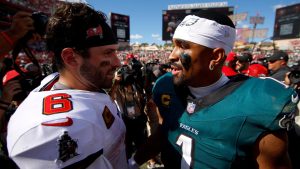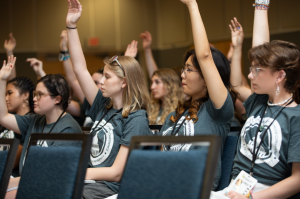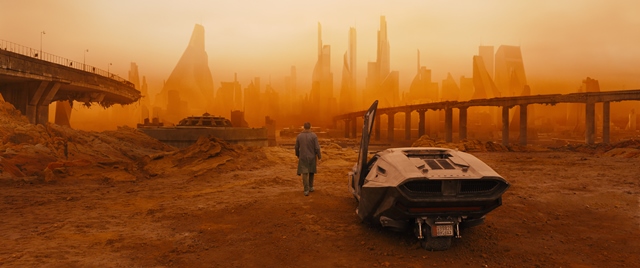Blade Runner Sequel Worth the Wait
Courtesy of Warner Bros. Pictures
BLADE RUNNER 2049
After thirty-five years of waiting, film goers have finally been graced with Blade Runner 2049, the long awaited sequel to the original masterpiece, Blade Runner. Although the dystopian film has a few stumblings and falls flat in some areas, these are not enough to keep the film from transcending the original.
Blade Runner is about futuristic Los Angeles, where a non-human Replicant “blade runner”, K (Ryan Gosling), for the LA police department discovers a secret that has the potential to completely disrupt society. He goes on a quest to find Rick Deckard (Harrison Ford), a former blade runner (and main character of the original movie) who has been missing for 30 years. The story is full of political intrigue, corporate and government conspiracies.
In the 30 years since Deckard was around, the world of Blade Runner has grown even bleaker and more desolate. Los Angeles now has to have walls built around it to protect it from rising water and pollution due to climate change and mass pollution, sending a clear environmental message. Cities are dirty, crowded, and filled with crime and squalor. Robots that look like humans, called “replicants”, are used for slave labor in off-world colonies. And blade runners are sent out to kill old, outdated, or rebelling replicants.
One thing that makes the sequel so good is the story of the troubled main character. Audiences can connect with K and his struggles on personal and emotional level. Society hates him for being a replicant and for being a “skinner”. His superiors treat him horribly, and he lives in a small hole-in-the wall apartment with no one but his hologram “girlfriend”. He is a machine built for killing, and this shows in the way he’s played by Gosling. K shows very little emotion — his face is straight and hard the whole time, he has very little fluctuation or tone in his voice, and shows almost no personality. His work is his life. Through his journey, however, he starts to become almost human.
The only weak link in this film, as far as characters, is Niander Wallace (played by Jared Leto). An eccentric billionaire, he is the driving force behind humanity’s ever-growing expansion onto offworld colonies, and the owner of the Wallace Corporation. He single-handedly revived the business of building Replicants after the practice was outlawed. As such, he holds a monopoly. He is blind, and because of this, he uses a lackey to do his work will he sits in a room spouting philosophy and messiah nonsense. He is in no way interesting. He shows up very little in the film and everything he says sounds like it should have a maniacal “Mwwwwaaahhahah” behind it.
The neat little bow on top of this most welcomed present is the direction of the Film and Cinematography, helmed by Denis Villeneuve (Arrival, Prisoners) and Roger Deakins (True Grit, Inside Llewyn Davis) respectively. Villeneuve’s skillful hand guides all of the actors and set pieces like omniscient Gods, knowing exactly where to put a person, or where to position the camera. Deakins has always been known in the industry as a great, being used by directors such as the Coen brothers, but he hands in the cinematography to end a career. Almost all of the effects are practical, including the flying “Spinner” or car. The city is rainy or snowing. Everything has a weird purple or yellow or brown tinge to it. Any CGI that is in the film is perfectly integrated.
The direction and cinematography are so well done, the audience will pick up on tiny details of the world without any words. If these two do not win Oscars for their work, it will be surprising.
All in all, Blade Runner 2049 is a feast for the eyes that will leave moviegoers pondering morality and identity.

Christopher is an 11th grader in the Journalism class. Writing is a big part of his life. He enjoys reading and messing around with written language....




















